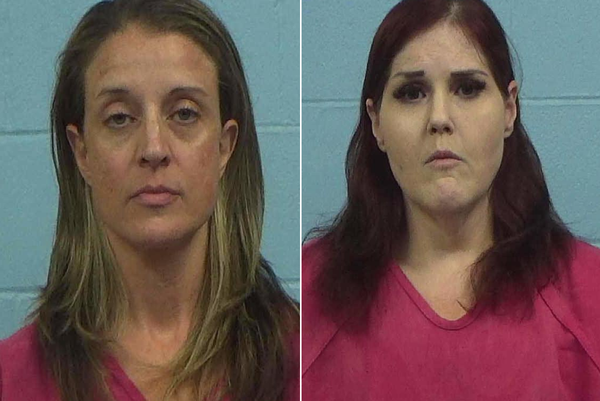Tasmania's 29 councils need to have their boundaries redrawn and be forced to merge along those new lines because the status quo is not sustainable, a report on local government reform has found.
The proliferation of councils in a relatively small state has been a contentious issue for many years and efforts to encourage voluntary mergers have failed.
Stage two of a Local Government Board review has recommended the state's council boundaries be redrawn and their number significantly cut.
"The scale and extent of the consolidation needed to deliver significantly better services will, unfortunately, not occur on a purely voluntary basis within the current framework," the report said.
"Reform must be designed collaboratively but once settled, implementation must be mandated by the State Government."
Last year, the Local Government Board began a review examining the future role, functions and sustainability of Tasmania's councils.
It handed down its stage two report on Wednesday.
The report said making mergers voluntary could "not be achieved on an opt-in or voluntary basis. We know this because previous attempts … have been ineffective."
Local Government minister Nic Street said the next stage of the process was crucial.
"In saying that the situation isn't sustainable going forward, I think that means there will be fewer councils at the end of this," he said.
"In terms of what that looks like, I don't want to pre-empt the stage three process.
"This next six months is where the rubber really hits the road in terms of talking about what structural reforms are needed."
Catchments a 'starting point'
The report does not stipulate how many councils Tasmania should have when the process is complete, but it does identify nine 'community catchments'.
Developed with help from the University of Tasmania, the catchments roughly group together the west and north west, the central north coast, the Tamar Valley, the north-east, east coast, south east, central highlands and midlands, the greater Hobart area, Hobart's eastern shore and the south.
Both the minister and the chairwoman of the Local Government Board Sue Smith were adamant the catchments did not indicate where new council boundaries would lie.
"They overlap communities and current municipal boundaries so there are councils that are covered by one or more catchment areas," Nic Street said.
"I want to be absolutely clear that these catchment areas are not preliminary or final or draft municipal boundaries for any structural reforms that takes place."
Ms Smith said the catchments grouped together "communities of interest" and gave councils a starting point for merger talks.
"I am hoping in this process that what the community catchments will do is encourage councils to go to communities and neighbours," she said.
"We hope they show some leadership sand come back with some good strong comments and potentially some decisions that they have made that they want to put before us."
Planning role review 'too contentious'
A second issue — the role of elected members in assessing development applications — was so controversial it risked derailing the process and was removed from the scope of the review entirely.
"It's a particularly contentious piece of work with varying views," Mr Street said.
"I have made the judgement, and the government has made the judgement, that if we decide to do that work going forward, it's more appropriately done outside the scope of this review. "
The Local Government Board canvassed the views of over 4,000 people and community groups for the stage two report and has asked for a three-month extension to complete stage three.
The final report, which will include a suite of recommendations, will now be presented to the minister in September.
Mr Street said he would then take a legislative package, including proposed changes to municipal boundaries, to parliament.
"It's clear that the reforms that are being talked about are of a significant enough nature that the ideal way forward … is for me to present it to parliament as a legislative package," he said.
Council areas no longer 'aligned with communities'
Council amalgamation has proved a thorny issue for state governments in the past but so far, all have baulked at forced mergers.
In 2016 and 2017 the Tasmanian Government funded a range of studies highlighting the efficiencies that could be gained by consolidation and urged voluntary action, but there were no council mergers as a result.
In early April, a report by Tasmania's Auditor-General pointed to the need for reform. It found that although urban councils had bounced back from the COVID outbreak, rural councils were still operating at a deficit.
What's more, over the past four years, while rural council expenses had increased, revenue had fallen.
The Local Government Board report said there were many downsides to Tasmania's proliferation of Local Government Areas (LGAs).
"The competition, fragmentation, and duplication of effort which naturally occurs across 29 councils can and does hinder collaborative effort and outcomes," it said.
"The fact tens of thousands of Tasmanians now commute across council boundaries on a daily basis is a clear example of how current LGAs are no longer aligned with the communities in which many Tasmanians live and work."
Rural council concerns
Derwent Valley mayor Michelle Dracoulis said she saw some value in resource sharing, but did not think the review was going to be about "sweeping change across the whole state".
"My worry about Derwent Valley being amalgamated with one of the larger metropolitan councils is of course that it doesn't resonate with our identities," she said.
"We're a rural and regional council [and] we represent a rural and regional population. Our needs are very different to that of a metropolitan hub and, of course, the services that [we provide] are very different."
The mayor said she was also concerned about staff.
"We've got local government staff all around Tasmania at the moment who are probably quite nervous wondering what their future will be," she said.







